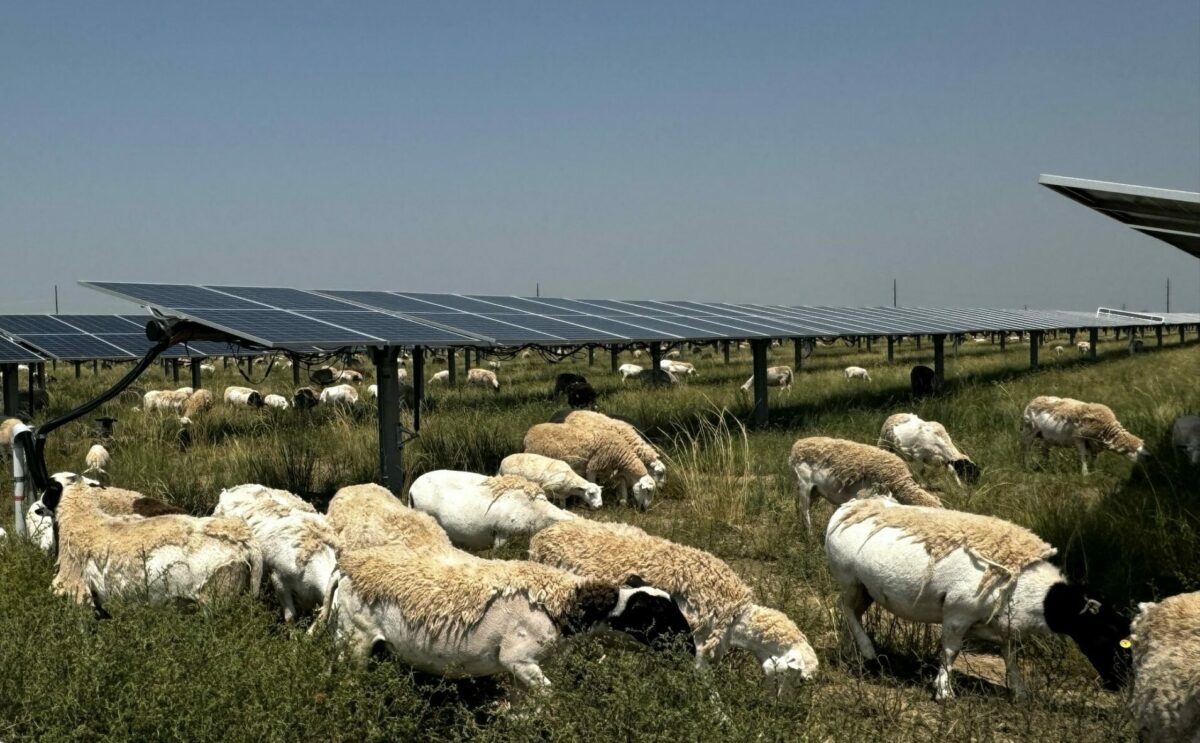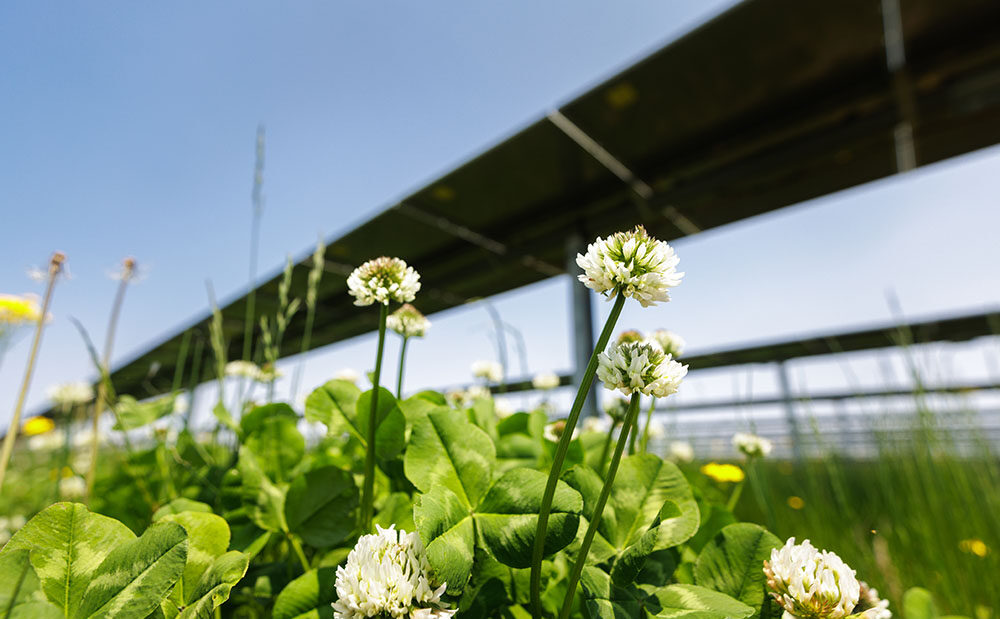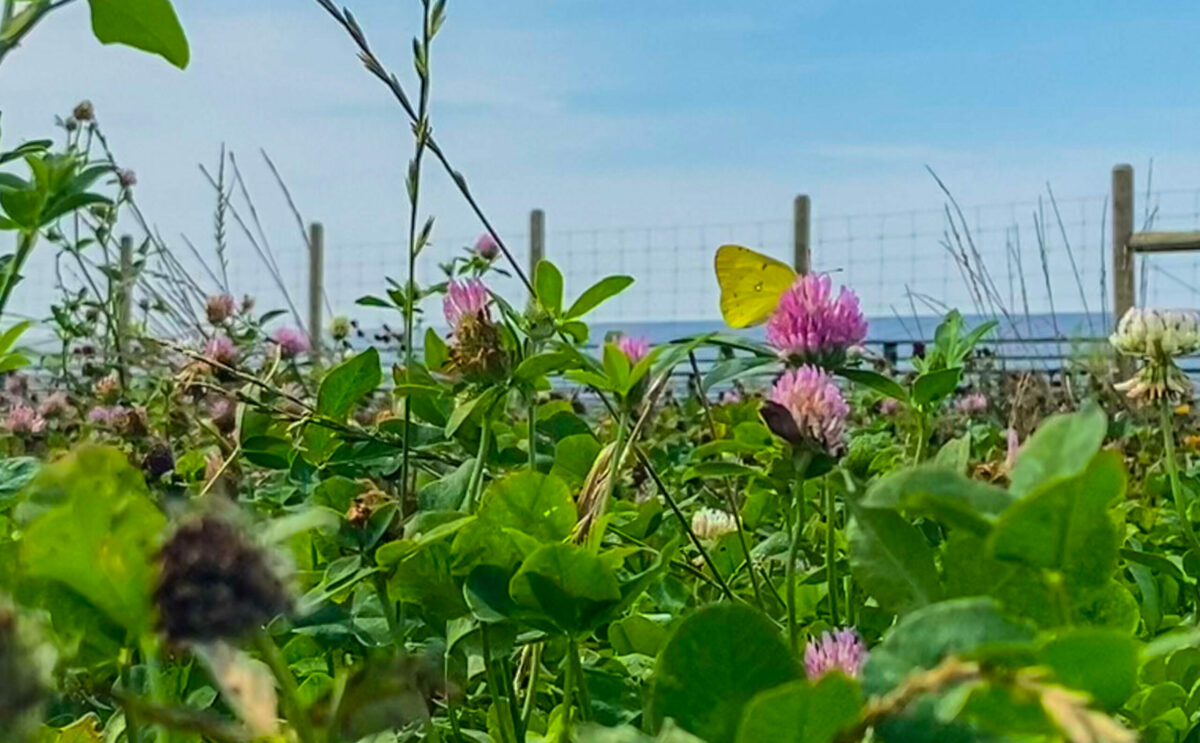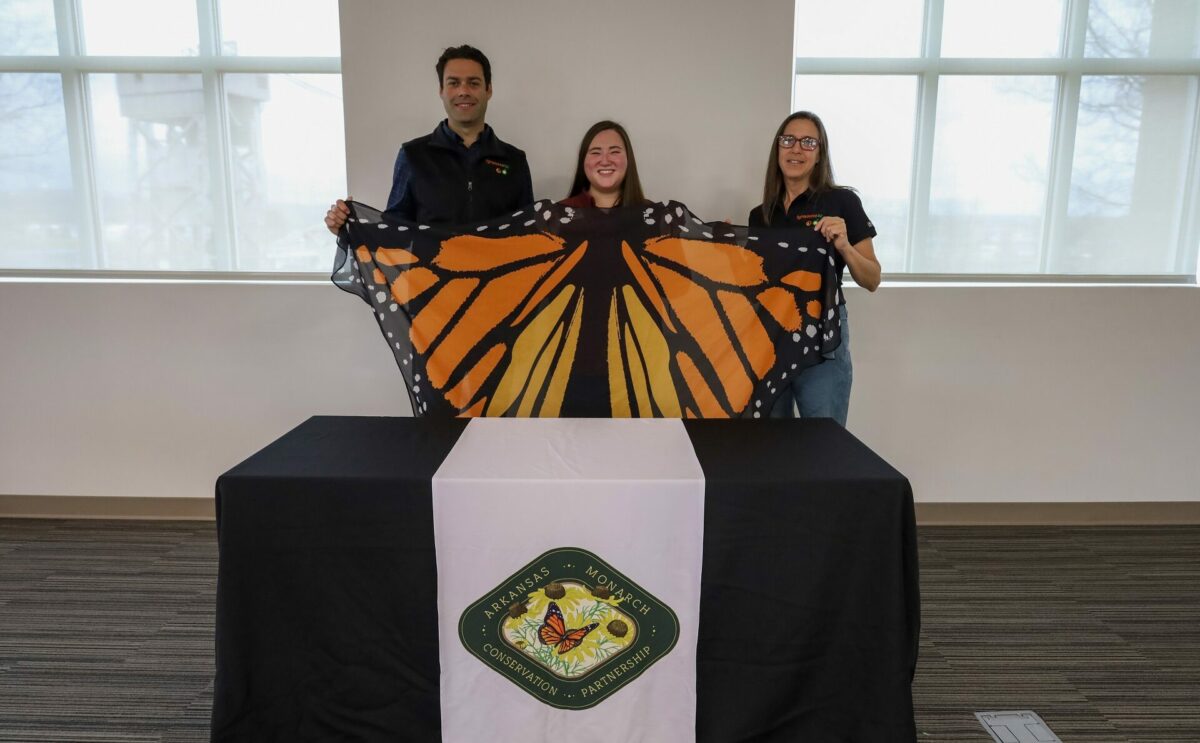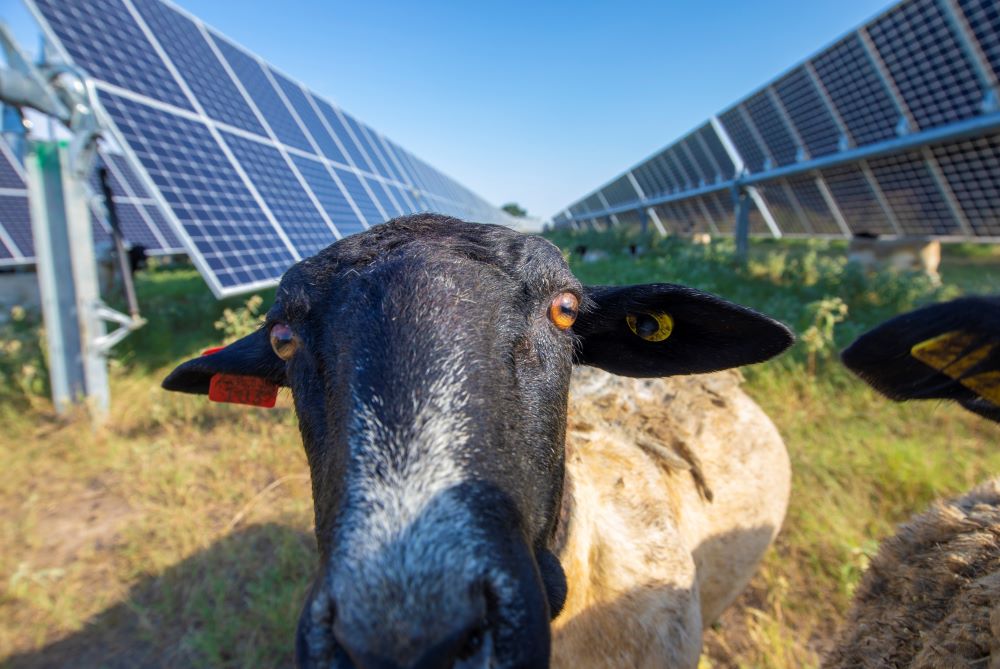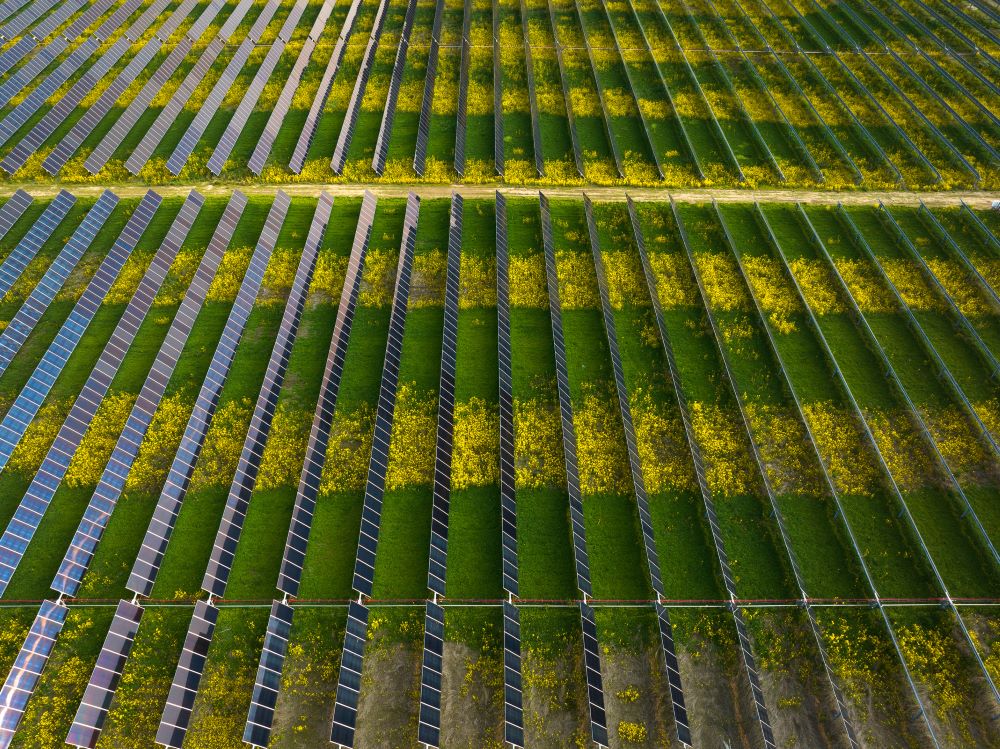Our commitment to biodiversity and habitat conservation
The World Wildlife Fund reports that North America has seen a 33% drop in overall biodiversity since 1970, with even greater losses globally. Our environment, our lives and our livelihoods are at risk.
Climate change and biodiversity loss are two of the most critical, intertwined issues our planet is facing. As part of our Responsible Solar ethos, our goal is to demonstrate a biodiversity increase (net biodiversity gain) at our solar farms within 5 years post construction.
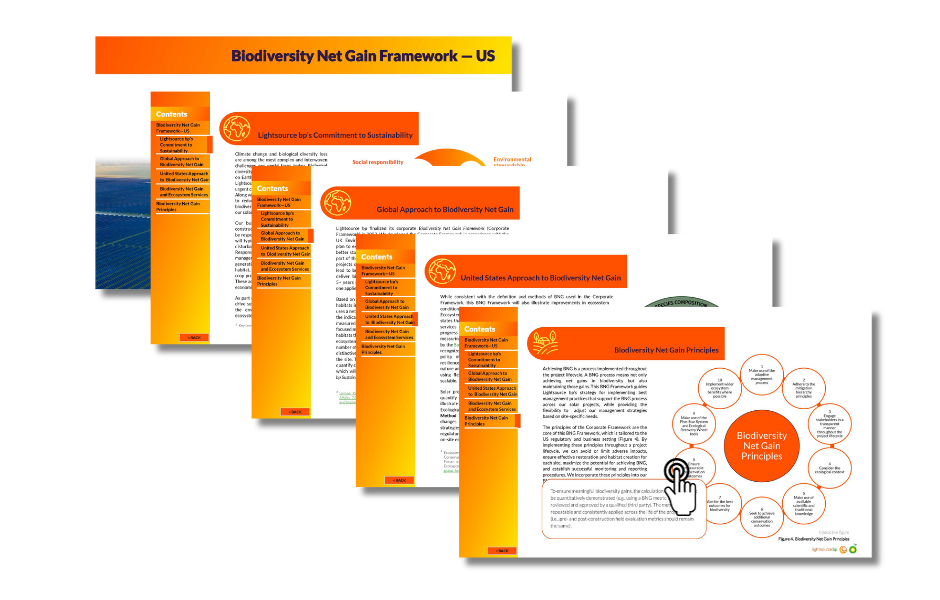
Creating and preserving habitat under and around the solar panels
Solar farms inherently lend themselves to habitat enhancement and conservation initiatives– studies have shown solar farms can majorly increasing biodiversity on previously disturbed land in just a few years with the use of pollinator-friendly seed mixes. Lightsource bp’s goal is to increase biodiversity at our solar projects, creating habitat for a variety and abundance of species under and around the solar panels. We create a detailed vegetation plan in partnership with local and regional seed suppliers, conservationists, certified crop advisors and agronomists. A typical mix of plant species at an established Lightsource bp solar farm will include numerous species of grasses and flowers.
We carefully curate customized seed mixes and other vegetation so that our solar farms can serve as safe, supportive homes for beneficial insects, birds and other wildlife under our biodiversity framework. The durability and diversity of the plant species selected are weighed with other important factors, such as stormwater absorption and soil health. We look to support habitat creation, agricultural use, soil stabilization, carbon capture and resilience. We actively monitor and measure net biodiversity gain based on scoring systems developed by international conservation groups.
24 Jul, 2024
Restoring prairie, raising sheep and sinking carbon in Colorado
Sinking carbon on solar farms: A new kind of PV + Storage
11 Jun, 2024
Preserving habitat and integrating agriculture at Impact Solar, three years in
Habitat enhancement & agrivoltaics in Texas
31 Jul, 2023
Habitat creation and preservation at Prairie Ronde Solar
Three ways we're boosting biodiversity
Declining pollinator populations threaten our global food supply. Solar farms can help!
Pollinators such as butterflies, bees, birds and bats support plant reproduction and reinforce strong resilient ecosystems. Three-fourths of the world’s flowering plants and about 35 percent of the world’s food crops depend on pollinators to reproduce, according to the USDA. Some scientists estimate that one out of every three bites of food we eat exists because of animal pollinators.
Unfortunately, pollinator populations are declining. Scientists believe that loss of habitat for feeding and nesting is a primary cause. Every acre of pollinator habitat created and conserved makes a big difference in supporting these crucial species. According to a 5-year study from Argonne National Laboratory, solar farms with habitat restoration can significantly boost populations of pollinator insects on the land, with native bees showing a 20-fold increase on their test sites. They also found that the insects visited nearby crop fields, making neighboring farmland more productive! The researches concluded that these findings “provide support for solar-pollinator habitat as a feasible conservation practice to safeguard biodiversity and increase food security in agricultural landscapes.”
To help mitigate this loss of pollinators, Lightsource bp is creating and managing vegetation to support pollinator populations at many of our solar farms. There is large potential for co-located pollinator habitat to deliver ecosystem and agricultural benefits on solar farms – yielding benefits for a range of stakeholders, from solar developers to farmers to surrounding communities.
03 Sep, 2024
Solar Synergy in Indiana: Our Bee & Butterfly Habitat Fund partnership at Honeysuckle Solar
Partnership for pollinator conservation
07 Feb, 2023
Solar farm, safe haven: Monarch butterflies to find crucial habitat at Conway Solar
Arkansas Monarch Conservation Partnership
13 Apr, 2023
Researching the benefits of pollinator conservation at Bellflower Solar
Habitat enhancement in Indiana
Learn more about our Responsible Solar approach to environmental sustainability
Environment
Learn how we're maximizing the environmental sustainability of our solar projects
Research & monitoring
Learn how we're contributing to academic research and industry best practices.

